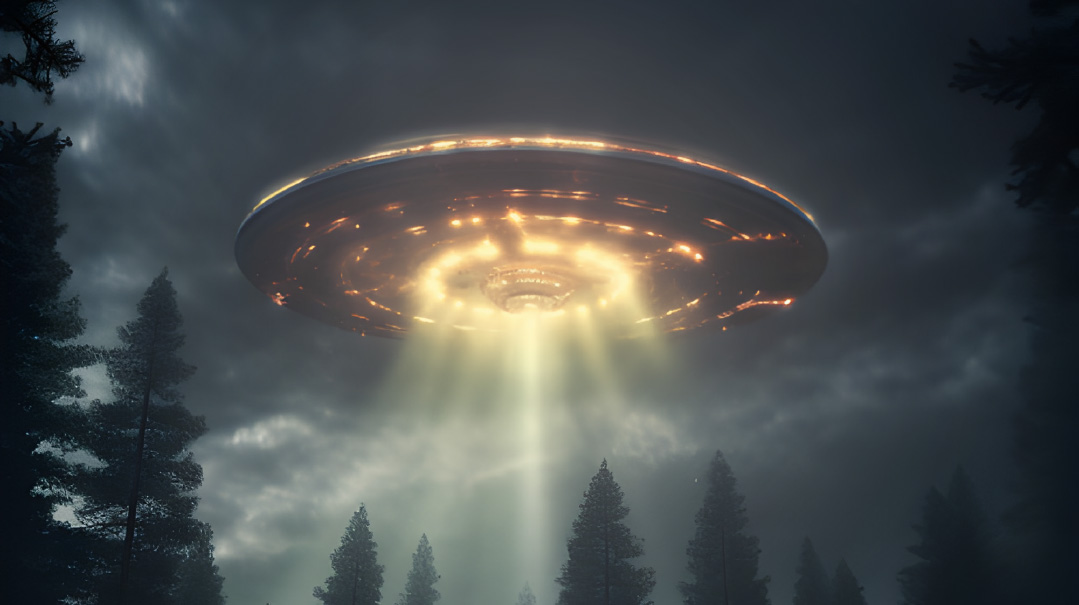Alone in the World?

Has the Pentagon been hiding information on extraterrestrial life from the public for decades?

Photos: Avi Loeb archives, YouTube screenshots, Mishpacha archives
The recordings captured from US Air Force planes last a mere 1.17 minutes — just long enough to spark mass international reaction. In the first video, against a backdrop of cloud contours, a bright white oval figure streaks across the sky.
“Oh, my gosh!” exclaims one of the pilots.
“They are going against the wind!” chimes in the second, “and the wind is 120 knots to the west!”
“Look at that thing, dude!” insists the first one.
Suddenly, the object starts to rotate. The pilot can’t contain his amazement.
“Look at that thing! It’s rotating!” Cut.
In the second video, the camera is pointed downward, with the sea as the backdrop. The radar pinpoints an object moving at such astonishing speed that it eludes tracking. The first two attempts are unsuccessful. On the third try, the radar locks onto it.
“Whoa! We got it!” exclaims the pilot.
The military personnel are all excitement: “Woo-hoo!” one cheers.
“Oh, my gosh, dude!” exclaims the first.
“Wow! Look at it fly!” Cut.
In the third video, a small object picked up by the radar remains static for a few moments before vanishing abruptly. Cut.
These images were never meant to go public. In fact, they gathered dust in the Pentagon’s archives for several years until Christopher Mellon, former deputy assistant secretary of defense for intelligence in both the Bill Clinton and George W. Bush administrations, and later for Security and Information Operations, leaked them to the press. Since 2017, Mellon has been working to discover the truth about unidentified aerial phenomena, or what are commonly known as UFOs, or what the US government now calls UAPs — unidentified anomalous phenomenon.
After decades on the margins, in which interest in UFOs was dismissed as crankery, the field has edged into the mainstream.
Suddenly, all those crazies claiming to have seen “close encounters of the third kind” were no longer farmers who had seen a dawn light in the field, campers who had spotted a strange figure among the trees, or conspiracy theorists adamant that the government was hiding alien bodies from the Roswell Incident (the July 1947 recovery of metallic and rubber debris from a military balloon by Roswell Army Air Field personnel, who issued a press release announcing possession of a “flying disc”). They were decorated military personnel, esteemed scientists, and career politicians.
Public demand for more information and the confusion generated by the viral spread of these recordings forced the Pentagon to release a declassified version of the videos. These nearly two minutes of film represented an unforeseen victory for all those who had been silenced, labeled as conspiracy theorists, branded as crazy, or ridiculed for believing in something that until very recently was the exclusive material of science fiction products.
Few of them could have imagined what would happen next: The United States Congress, in an unlikely display of bipartisanship in these divided times, exhibited a unified interest in uncovering what was hovering in American skies. This past summer’s congressional hearing was boosted by another whistleblower, former intelligence officer David Grusch, who testified that he worked on classified military programs and that the government has had a longstanding program to retrieve UFOs, and that “nonhuman biologics have been found at crash sites.”
Just days ago, congressmen were taken aback by the testimonies of three former Air Force personnel who detailed their encounters with UAPs and who’ve called for the government to allocate more significant funding to determine if we are truly not alone in this universe.
How did the discussion of the existence of extraterrestrials, once swept under the rug or the purview of the eccentric, manage to become a mainstream topic?
Oops! We could not locate your form.







